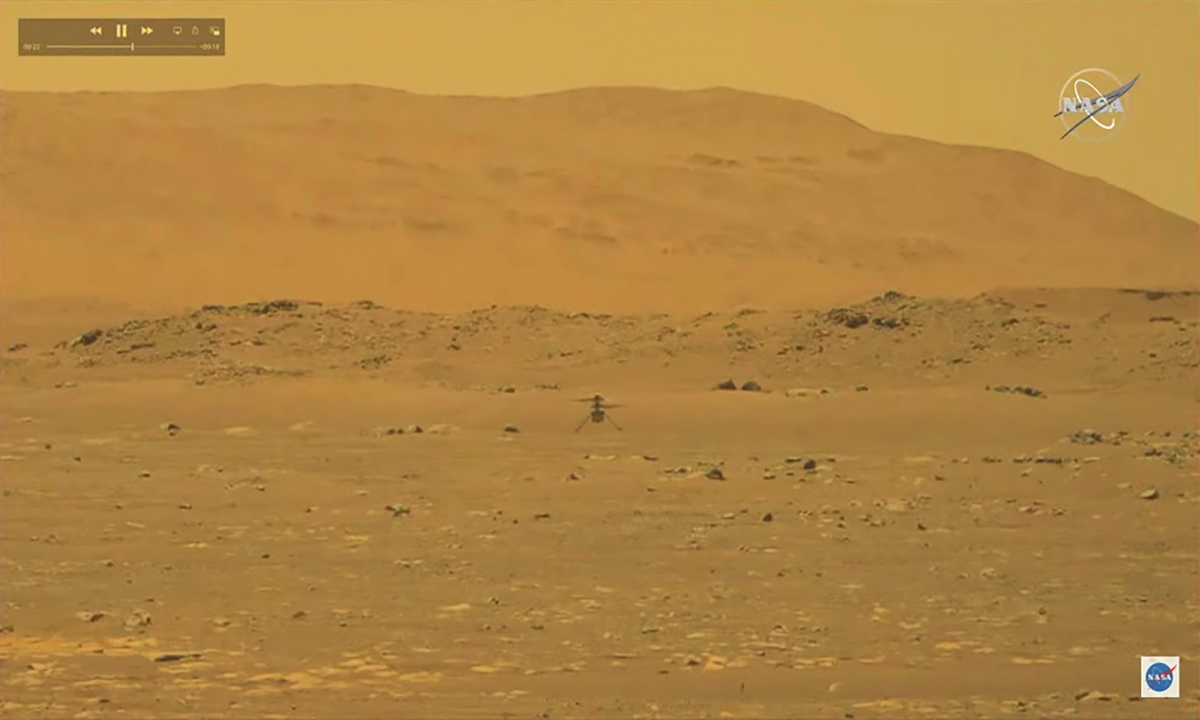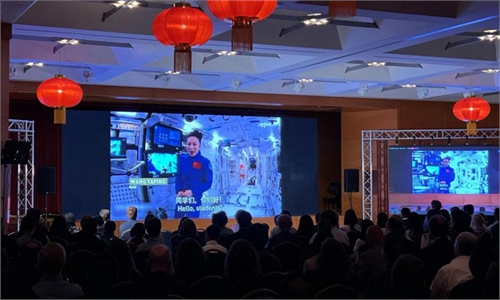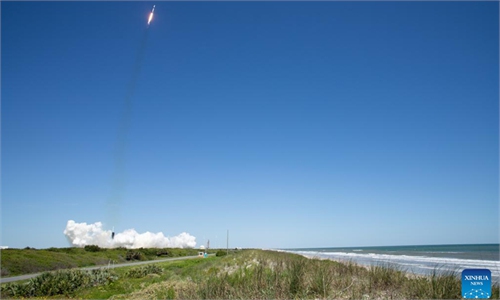
A handout video taken from a livestream by NASA shows NASA's Ingenuity Mars Helicopter during its first test flight, as seen by NASA's Perseverance Rover, on Mars, on Monday. According to NASA, Ingenuity has successfully performed a short flight on Mars, the first ever helicopter flight on another planet. Photo: IC
After some four years probing Mars' interior, NASA's InSight lander will likely retire in the summer of 2022 as accumulated dust on its solar panels saps its power.The lander will, however, leave behind a legacy of data that will be tapped by scientists around the world for years to come, helping to improve our understanding of planet formation, NASA said, while announcing on Tuesday the imminent end to InSight's science operations.
Equipped with an ultra-sensitive seismometer, InSight recorded more than 1,300 "marsquakes," including a magnitude 5 quake on May 4, the largest so far. But around July, the seismometer will be turned off.
The lander's energy level will then be checked about once a day, and some pictures may still be taken. Then by the end of 2022, the mission will be completely stopped.
The cause: the accumulation over months of Martian dust on the lander's two solar panels, each measuring about seven feet (2.2 meters) wide.
InSight, which is already running on only a 10th of the energy it had at the beginning, will soon find its batteries drained. The speed at which dust accumulated corresponded more or less to what had been estimated by NASA.
The lander got a new lease on life around a year ago, when its robotic arm was put to new and unplanned use to remove some dust from the solar panels, extending the mission.
The maneuver - employed six times successfully - saw the arm use dust itself to clear the panels, as it scooped up some Martian soil and gently dropped onto the robot so the dirt was blown across the solar panels, clearing parts of their surface.
AFP



